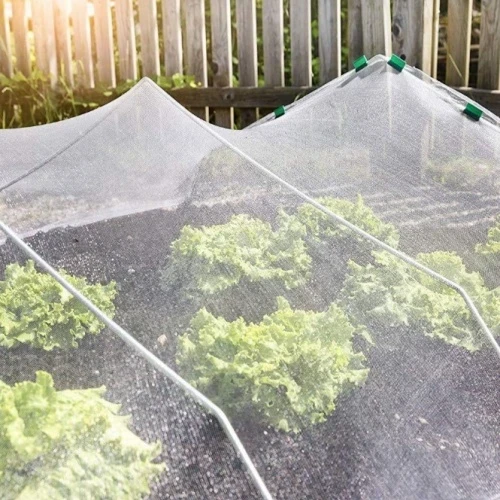-
 Afrikaans
Afrikaans -
 Albanian
Albanian -
 Amharic
Amharic -
 Arabic
Arabic -
 Armenian
Armenian -
 Azerbaijani
Azerbaijani -
 Basque
Basque -
 Belarusian
Belarusian -
 Bengali
Bengali -
 Bosnian
Bosnian -
 Bulgarian
Bulgarian -
 Catalan
Catalan -
 Cebuano
Cebuano -
 China
China -
 Corsican
Corsican -
 Croatian
Croatian -
 Czech
Czech -
 Danish
Danish -
 Dutch
Dutch -
 English
English -
 Esperanto
Esperanto -
 Estonian
Estonian -
 Finnish
Finnish -
 French
French -
 Frisian
Frisian -
 Galician
Galician -
 Georgian
Georgian -
 German
German -
 Greek
Greek -
 Gujarati
Gujarati -
 Haitian Creole
Haitian Creole -
 hausa
hausa -
 hawaiian
hawaiian -
 Hebrew
Hebrew -
 Hindi
Hindi -
 Miao
Miao -
 Hungarian
Hungarian -
 Icelandic
Icelandic -
 igbo
igbo -
 Indonesian
Indonesian -
 irish
irish -
 Italian
Italian -
 Japanese
Japanese -
 Javanese
Javanese -
 Kannada
Kannada -
 kazakh
kazakh -
 Khmer
Khmer -
 Rwandese
Rwandese -
 Korean
Korean -
 Kurdish
Kurdish -
 Kyrgyz
Kyrgyz -
 Lao
Lao -
 Latin
Latin -
 Latvian
Latvian -
 Lithuanian
Lithuanian -
 Luxembourgish
Luxembourgish -
 Macedonian
Macedonian -
 Malgashi
Malgashi -
 Malay
Malay -
 Malayalam
Malayalam -
 Maltese
Maltese -
 Maori
Maori -
 Marathi
Marathi -
 Mongolian
Mongolian -
 Myanmar
Myanmar -
 Nepali
Nepali -
 Norwegian
Norwegian -
 Norwegian
Norwegian -
 Occitan
Occitan -
 Pashto
Pashto -
 Persian
Persian -
 Polish
Polish -
 Portuguese
Portuguese -
 Punjabi
Punjabi -
 Romanian
Romanian -
 Russian
Russian -
 Samoan
Samoan -
 Scottish Gaelic
Scottish Gaelic -
 Serbian
Serbian -
 Sesotho
Sesotho -
 Shona
Shona -
 Sindhi
Sindhi -
 Sinhala
Sinhala -
 Slovak
Slovak -
 Slovenian
Slovenian -
 Somali
Somali -
 Spanish
Spanish -
 Sundanese
Sundanese -
 Swahili
Swahili -
 Swedish
Swedish -
 Tagalog
Tagalog -
 Tajik
Tajik -
 Tamil
Tamil -
 Tatar
Tatar -
 Telugu
Telugu -
 Thai
Thai -
 Turkish
Turkish -
 Turkmen
Turkmen -
 Ukrainian
Ukrainian -
 Urdu
Urdu -
 Uighur
Uighur -
 Uzbek
Uzbek -
 Vietnamese
Vietnamese -
 Welsh
Welsh -
 Bantu
Bantu -
 Yiddish
Yiddish -
 Yoruba
Yoruba -
 Zulu
Zulu
Hail Net - Real-Time Hail Alerts and Weather Monitoring
Understanding Hail Net Technology A Protective Measure for Agriculture
Hailstorms can be a significant threat to agricultural produce, causing extensive damage to crops, fruits, and even infrastructure. As climate change influences weather patterns, the frequency and intensity of hail events are predicted to rise. Farmers and agricultural businesses, therefore, must adopt innovative protective measures. One such measure gaining popularity is the implementation of hail nets.
Hail nets, often referred to as hail protection nets or hail nets, are specially designed mesh barriers that are installed above crops. These nets serve as a physical shield, minimizing the impact of hailstones on plants and fruits below. Made from durable materials like polypropylene, the nets are resilient enough to withstand harsh weather conditions while providing sufficient coverage to protect valuable agricultural products.
The installation process of hail nets may vary depending on the type of crop and the specific agricultural setup. Typically, they are installed in a grid pattern above the fields, supported by poles and tensioned to ensure they remain taut. This strategic placement helps not only in preventing hail damage but also in protecting crops from extreme sun exposure, reducing heat stress during scorching summer days.
One of the primary benefits of hail nets is the significant reduction in crop loss
. Studies have shown that fields protected by hail nets can experience up to 90% less damage compared to unprotected fields during hail events. This is especially crucial for high-value crops like grapes, cherries, and apples, where even minor damage can lead to substantial financial losses. By mitigating hail impact, farmers can ensure higher yields and better quality produce, ultimately enhancing profitability.hail net

Additionally, hail nets offer protection beyond hail. They can shield crops from birds and larger pests, reducing the need for chemical interventions. Consequently, this leads to a more sustainable farming approach, aligning with the growing demand for environmentally friendly agricultural practices. By reducing pesticide use, farmers can contribute to the overall health of the ecosystem and provide consumers with safer produce.
Moreover, the installation of hail nets can be viewed as an investment in the long-term viability of a farming operation. While the initial setup cost may seem daunting, the financial losses from damaged crops during a hailstorm can far exceed the expense of installing and maintaining the nets. In regions severely affected by hailstorms, the benefits of such technology often outweigh the costs, providing growers with peace of mind.
Despite the numerous advantages, it is essential to consider that hail nets are not a one-size-fits-all solution. Factors such as local climate, the types of crops being grown, and the cost of installation should all be evaluated before implementation. Additionally, ongoing maintenance is crucial to ensure the durability and efficiency of the nets over time.
In conclusion, hail net technology represents a valuable tool in the agricultural sector, offering protection against hail damage while promoting sustainable farming practices. As climate challenges continue to evolve, embracing such innovative solutions can help safeguard food production and enhance resilience in the face of natural adversities. Farmers who invest in hail protection nets are not only protecting their crops but also securing their livelihoods for the future.
-
Shipping Plastic Bags for Every NeedNewsJul.24,2025
-
Safety Netting: Your Shield in ConstructionNewsJul.24,2025
-
Plastic Mesh Netting for Everyday UseNewsJul.24,2025
-
Nylon Netting for Every UseNewsJul.24,2025
-
Mesh Breeder Box for Fish TanksNewsJul.24,2025
-
Expanded Steel Mesh Offers Durable VersatilityNewsJul.24,2025











